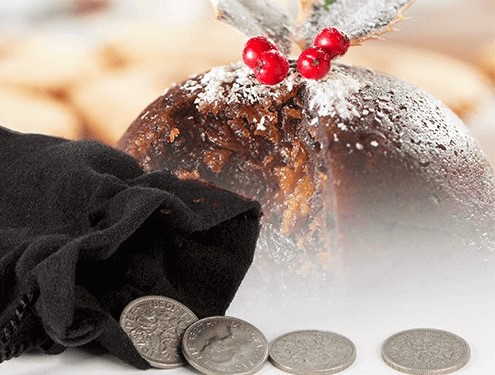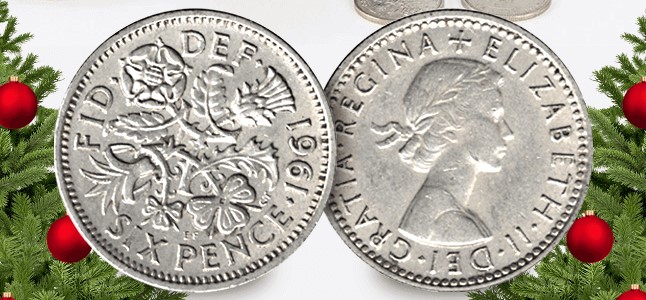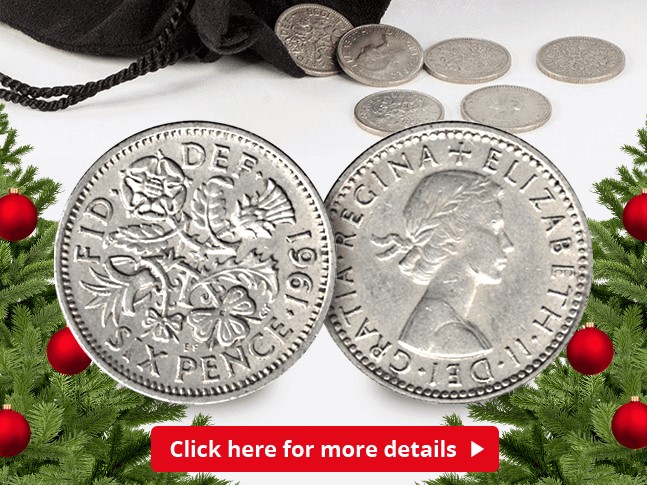Posts Tagged ‘Coin collection’
The UK Coin Series celebrating one of Britain’s most iconic attractions…
The Tower of London has been a symbol of royal power for nearly 1,000 years.
Built during the Norman conquest in 1066, Her Majesty’s Royal Palace and fortress of the Tower of London has been used as a prison, jewel house, mint and even a menagerie!
It’s been home to kings and queens, thieves and traitors, and lions and bears.
In tribute to the Tower, The Royal Mint announced they would be issuing a four coin series throughout 2019 celebrating the history of the Tower of London, one of Britain’s most iconic attractions. The series included coins depicting the following:
- The Legend of the Ravens
- The Crown Jewels
- The Yeoman Warders
- The Ceremony of the Keys
2019 The Legend of the Ravens £5
Featuring a Raven with a bird’s-eye view of the Tower in the background, the first coin in the series captures the illustrious history of the iconic British landmark and its most famous residents.

The Tower’s ‘raven mythology’ is thought to be a Victorian flight of fantasy and has been a source of many legends, including the fate of Greenwich observatory.
It’s said that King Charles II disliked the raven’s droppings falling onto the telescope at the Tower’s observatory, and so ordered that the ravens must go. However, superstition stated that if the ravens left, the Tower would fall and Charles would lose his kingdom. Ever the pragmatist, the King decided that the observatory must go to Greenwich and the ravens must stay in the Tower.
2019 Crown Jewels £5
The second coin to be issued in The Royal Mint’s Tower of London series was the Crown Jewels £5.

Several expansions were made to the Tower throughout the reign of Kings Richard I, Henry III and Edward I in the 12th and 13th centuries, however in general the original layout remains consistent. It suffered structural damage during the Blitz, but this was repaired after the Second World War and the Tower was opened to the public, to marvel at the Tower’s most esteemed treasures – the Crown Jewels!
Not only a powerful symbol of the British Monarchy, the jewels have deep religious and cultural significance in British history and are used by HRH King Charles III for important ceremonies and royal duties.
However, the 12th century anointing spoon and three early 17th century swords are the only four original jewels left after the English Civil War in 1649, when the Crown Jewels were destroyed and the monarchy abolished. The jewels were remade for Charles II’s coronation in 1661 following Oliver Cromwell’s death.
2019 Yeoman Warders £5
The third coin in the series celebrates the Yeoman Warders, who’ve have been guarding the Tower of London for more than 1,000 years.

Nicknamed as ‘Beefeaters’, they originally formed the Yeoman of the Guard, which was the monarch’s personal team of bodyguards.
The Yeoman Warders were responsible for looking after the prisoners in the Tower and protecting the crown jewels, however nowadays they also conduct guided tours of the Tower and are an important icon for Britain, resplendent in their red uniforms and a favoured tourist attraction.
It’s no mean feat to become a Warder however, as you need to be between 40 and 55 years old on appointment and hold at least 22 years’ military service, during which time you must have reached the rank of warrant officer and to have been awarded the long service and good conduct medal.
2019 Ceremony of the Keys £5
The fourth and final coin in the Tower of London series celebrates the Ceremony of the Keys. Designed by Glyn Davies the reverse of the coin depicts the keys and lamp which take centre stage in the ceremonial unlocking of the Tower of London gates.
For over 700 years, as the clock strikes ten, the words ‘Halt! Who comes there?’ echo in the Tower of London. The ancient Ceremony of the Keys is a formal locking and unlocking of the Tower gates, which started in the mid 1300s on order of King Edward III after he entered the Tower unannounced one night and was able to walk straight in, unchallenged!
Tradition states that at exactly seven minutes to ten at night, the Chief Yeoman Warder of the Tower must leave the Byward Tower, wearing a red Watch Coat and Tudor Bonnet and carrying a lantern. He takes with him a very special set of keys – the King’s Keys.
A military escort meets him at the Bloody Tower and at 10pm he moves two paces forward, raises his Tudor bonnet and says: ‘God preserve King Charles’. This is answered by ‘Amen’ from the guards and ‘The Last Post’ played on a bugle.
The keys are then taken back to the King’s House and handed to the King’s representative at the Tower, The Resident Governor.
Did you know? When all four coins in the series are placed together, they reveal a larger image showing the Tower of London walls connecting.

Which coin in the 2019 Tower of London series is your favourite? Let us know in the comments!
The Tower of London £5 series continued in 2020 with four more coins celebrating the iconic attraction.
Vote for the overall Coin Design of the Year 2018!
Since announcing the Coin Design of the Year category as part of our 2018 Change Checker Awards, the votes have been pouring in for your favourite 2018 coin from each nomination, and we now have our results!
You’ve shortlisted the top 4 coins, so we’ve been joined by Luke and Rowena in this video to reveal them to you and open up the vote for the overall Coin Design of the Year 2018:
So now it’s over to Change Checkers to pick the overall winner out of our shortlisted top 4 coins for 2018. Cast your vote using the poll below and let us know why you think your favourite coin deserves to be crowned the champion in the comments section at the bottom of this blog.
*** VOTE NOW CLOSED ***

Results
To find out more about the Change Checker Awards and to submit your nomination for the Change Checker of the Year or Junior Change Checker of the Year 2018, click here.
The lucky winners will be announced on the 7th of December, alongside the Coin Design of the Year and Coin Story of the Year.
Best of luck!
If you’re interested in coin collecting, our Change Checker web app is completely free to use and allows users to:
– Find and identify the coins in their pocket
– Collect and track the coins they have
– Swap their spare coins with other Change Checkers

Sign up today at: www.changechecker.org/app
Stir Up Sunday – the story behind the numismatic Christmas tradition
There are countless coins thought to be lucky, but there’s one lucky coin in particular which comes to my mind at this time of year…
The much-loved lucky Sixpence has been a part of Christmas traditions for generations and as this weekend marks ‘Stir-up Sunday’, we take a look back at the tradition that harks back to Victorian times.

Christmas tradition
Stir Up Sunday is celebrated five weeks before Christmas Day, when the whole family would gather together to stir the Christmas pudding and make a special wish for the year ahead.
The Christmas pudding itself is said to have been introduced to Britain by Prince Albert, husband of Queen Victoria and traditionally, when making the pudding, a sixpence would be added to the mix.
This was said to bring wealth and good fortune in the coming year if you found the coin in your portion on Christmas day.
It’s no surprise that collectors love these coins so much. The 1961 Sixpence below can be seen featuring an entwined design of a flora, leek, rose, thistle, and shamrock, the sixpence has long been a token of good luck so is an original and thoughtful gift for a friend or relative.

The Sixpence was first minted during Edward VI’s reign in 1551 and was struck in silver up until 1947. From this date onwards the coin was struck in cupronickel.
But there is one particular Victorian Sixpence that collectors hunt for…
The 1887 Withdrawn Silver Sixpence
In 1887, new coin designs were to be issued for Queen Victoria’s Golden Jubilee. Surprisingly, the Silver Sixpence shared the same design as the Gold Half Sovereign.
Of course, it didn’t take long for some crafty opportunists to start coating the Silver Sixpence in gold paint after realising they could easily be passed off as the far more valuable Half Sovereign.
The authorities hastily withdrew the Sixpence and a quick redesign took place, with the new 1887 Sixpence reverting to a design similar to previous years, with a crown at the top of the design and a wreath around the sides, with “SIX PENCE” written across the middle of the coin.

1887 Withdrawn Silver Sixpence
Nobody can be sure how rare these coins are, as mintage figures only record how many Sixpences were issued each year, rather than individually listing each design type and, because there were three different designs of the Sixpence in 1887, it’s impossible to know how many withdrawn coins survived.
One thing is certain though, the withdrawn coin is the Sixpence collectors hunt high and low for.
So whether you’re looking to hunt down a rare Sixpence for your collection, or if you’re preparing your Christmas pudding ready for Stir Up Sunday, we wish you the very best of luck this festive season.
Secure a special set of six Sixpences
The Sixpence has long been a token of good luck so is an original and thoughtful gift for a friend or relative.



